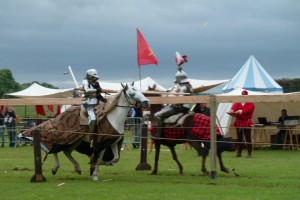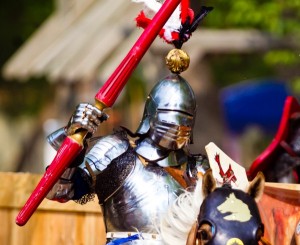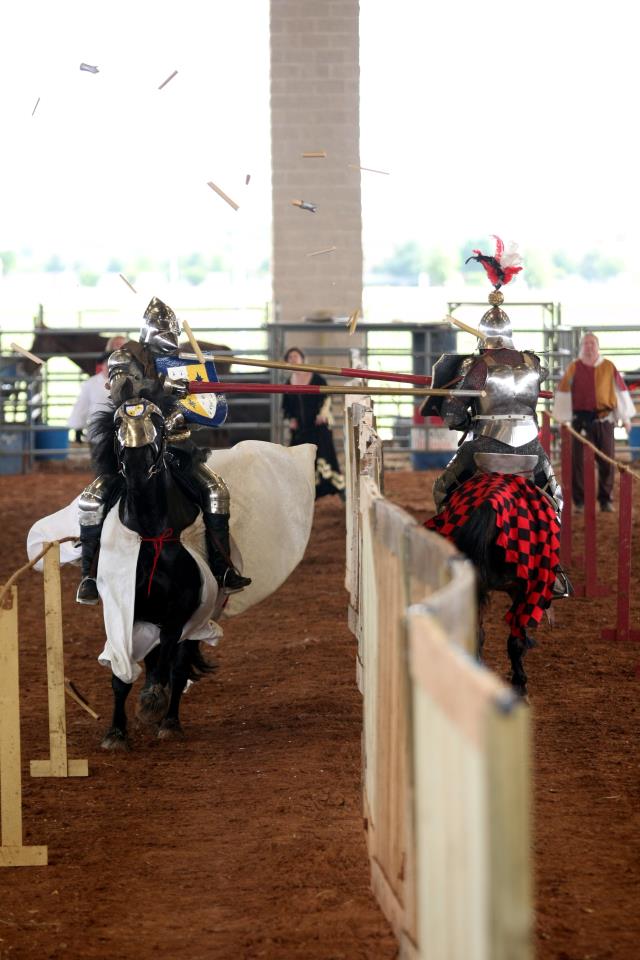JOUSTING
Jousting is like having a train wreck where you do your best to make sure the wreck goes well.
You have to make sure to present a good target for your opponent, attempt to hit them in the process, try to not loses your seat should you both be successful, and of course do it all with style.
Jousting is fast becoming a recognized equestrian sport in its own right. Tournaments in the United States have exceeded 30 jousters, and tournaments held in Europe regularly have as many as 16 jousters competing. There are typically 3 types of lances currently being used to do jousting with the indented result to break the lance. The largest category is replaceable tipped lances.
These lances offset the cost of the entire lance by typically only breaking the first 3 ft or meter. Most often these lance tips are made from Balsa wood, but Poplar and other woods have been used. Often the tip is cut to facilitate breakage and safety. After the tip breaks it is common to be hit with the more solid part of the lance the ferrel or socket hit and this can easily unseat an opponent. The second type of lance that is most commonly used in the US and from it derives the “American” style of jousting is a 12′ x 1.25″ pine

dowel tipped with a copper pipe fitting. These lances hit very hard, but worse, since they have so taper there is a strong tendency to flex quite a bit before they break. This results in a huge side load to the rider as they near each other in the tilt. The result: a lot of unhorsings. We saw this in “Full Metal Jousting” and “Knights of Mayhem” It is really important to have a good seat, and oh yeah, it helps to be big. Neither Shane Adams or Charlie Andrews are Little guys. My kudos go out to James Faircloth who was by far the smallest rider on FMJ. It tells you seat can beat weight, but put the both together…..
The third style of jousting has been pioneered by the big guys in the jousting world. Solid Shaped lances with steel coronels. This is the most historically accurate way to joust and though the strike may be hard, once the lance breaks you don’t get the socket as the lance usually breaks in such a way that the part gripped is too short to hit again. The shaping of the lance makes it easier to handle and also concentrates the force of the hit farther out the lance reducing the “Spring” effect seen in the unshaped solid jousting. Many historical jousters see this as the way of the future.
This style also involves a couple of items that most people don’t understand. The first of these is the “lance rest”. The lance rest, or arret is not used to “rest” the lance but to arrest the lance movement backward. Used in conjunction with a grapper, or a leather ring on the back of the lance, it is used to stop the lance from being pushed backward under the arm on impact and transfers the pressure of the hit from the hand and armpit to the body by the grapper through the arret.


